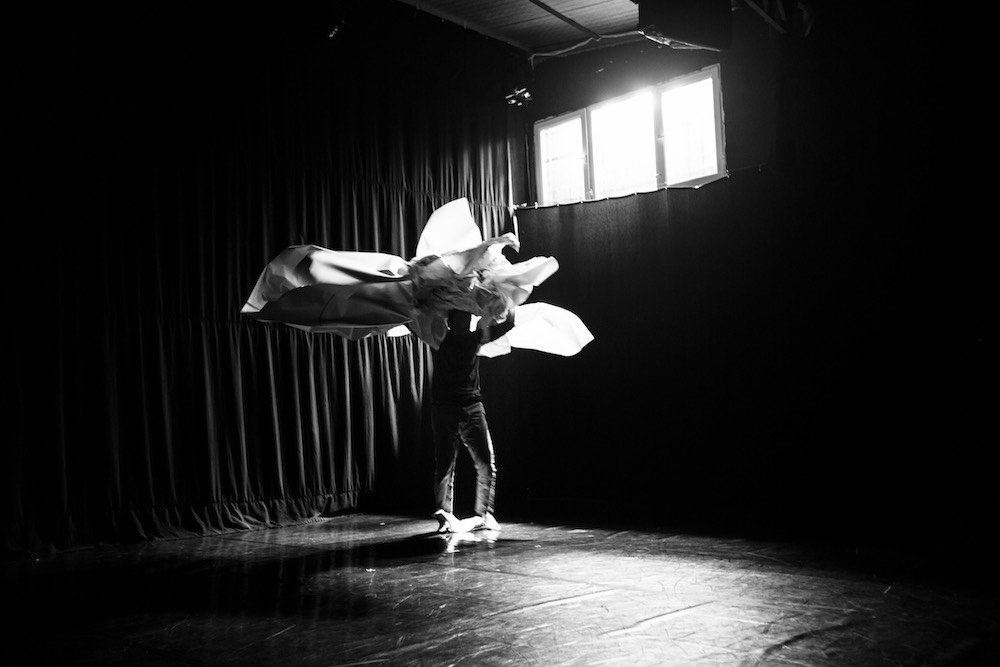SAR by dancer and choreographer Mihran Tomasyan and musician Saro Usta, which was first staged by the Çıplak Ayaklar Kumpanyası in 2015, was performed again a few weeks ago. We believe that the performance itself and the Q&A session afterwards speaks a great deal about the experience of being an Armenian from Turkey and we would like to share the discussion we, three of the Parrhesia members, had with Agos readers.
S: I first watched SAR in 2015 and was very impressed that Mihran and Saro, whom I have known since my childhood, found a creative way to express their experiences and did it together. For a few months before staging this performance, Mihran and Saro had meetings talking about many topics referring back to their childhood as well as politics. In the end, a mountain story emerged. On the stage, we watch Mihran, who sometimes gains a majestic appearance with the mountain, sometimes is crushed under its weight, sometimes shatters it, and sometimes tries to build another world for himself from those pieces. Since we do not come from homes where the shadow of Ararat does not fall, I think it was not too difficult for any of us to guess which mountain the mountain in question might be, and what kind of a struggle the dancer we were watching found himself in.
T: The piece of paper that was chosen as a representation of the earth and the ground and covered the entire stage formed the basis of the story of the dance performance. At the beginning of the story, the body was invisible under the paper. With every movement of the body, the paper received irreversible interventions, took shape, fluctuated and at the climax of the story turned into the majestic image of Ararat. Then we witnessed the wrinkling and tearing of the paper and the body's departure from the ground. The body's relationship with the ground took on a combative form as it chased after the scattered pieces and collected them in a black plastic bag. The body was now absolutely separated from the earth/paper. This black bag with all the pieces of paper contained fragments of the space of a time unfamiliar to us today. Later, the body, trying to tear the bag, was excited by a piece it took out of the bag. Even though it knew that its relation with the land can no longer be reversed, the body, with the hope of the small piece from the bag, danced (halay) around the point where the rising mountain once existed. For me, the dancer's excitement reflected the excitement that we Armenians today feel for the slightest scrap of information acquired through great efforts about the life form of our ancestors' lands. In this respect, the performance presented a successful representation of the relationship we Armenians have with the land today, the alienation that arises from the rupture of this relation with the land and our struggle with the heavy shadow of history that pulls us in.
S: I think the three of us can come together on a common ground, even if we have our differences in how we read performance. Yet, in the Q&A session we heard comments from the room that I would have never expected. Some had read it as an ecology story, some had found an echo of their personal traumas. The fact that Ararat didn't even come to their minds pierced something in me. However, at the point where the impact of Saro's absence on the performance was discussed, I thought that the difference between our perspectives was sometimes doomed to a radical irreconcilability. While the reason for this absence was the fact that Saro had to leave Turkey as many Armenians did, a few audience members said that from an aesthetic perspective they did not feel the absence of music at all. For us, on the other hand, Saro's absence could only indicate the very continuation of the sense of loss in the story we were watching.
A: In the silent studio, Mihran’s gaze fixed upon the first-story window to the left, the intermittently waxed and waned light coming out of it and the struggle as he bundled and embraced the papers with his entire body, took me to my own journey akin to climbing a mountain. As I strive to overcome my everyday challenges, there are moments when I feel like Saint Jacob in his mission to climb Mount Ararat in search of a relic from Noah's Ark, occasionally finding myself back at square one. The legend recounts that even though he had conquered a certain altitude during the day, Saint Jacob would awaken each morning at the foot of Mount Ararat. Disregarding this reality and driven by his unwavering determination, the saint persists in conquering the mountain, perpetuating his climb as an eternal cycle of suffering. The cycle is only broken when, on one fateful morning, an angel places a relic from the ark beside him, marking the fulfillment of his mission. Reflecting on these parallels, I wonder whether those of us who endure eternal suffering due to our identity, as history repeats itself, its ongoing violence, the latest being the ethnic cleansing of the people of Artsakh, will ever break the endless cycle of pain.

